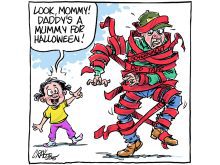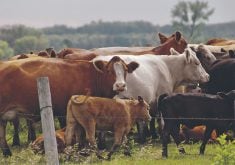Cattle are indiscriminate eaters. They will swallow just about anything from plastic to baler twine. Their aberrant appetites usually don’t pose a threat but if they consume sharp shards of metal, they risk developing hardware disease.
Wire pieces and nails can be dangerous. They pass through the rumen and get stuck in the reticulum, an organ the shape and size of a volleyball. With an internal structure like a honeycomb, this part of the forestomach is designed to filter out solid pieces before they pass to the intestines.
Read Also

Farmer ownership cannot be seen as a guarantee for success
It’s a powerful movement when people band together to form co-ops and credit unions, but member ownership is no guarantee of success.
During contractions of the reticulum, a sharp piece of metal aligned the right way can pierce the wall. If the metal only pricks the wall, bacteria from the reticulum can invade the site, causing an abscess to form. The resulting local inflammation may interfere with the vagus nerve, causing indigestion and possibly bloating.
Disturbances in rumen motility are often attributed to vagal indigestion secondary to hardware disease.
If the object moves forward, it can pierce the diaphragm, causing an infection in the pericardium, which is the membrane that surrounds the heart. As pus accumulates, pressure builds in the confined space, inhibiting the pumping action of the heart muscle. Eventually, the animal dies from heart failure.
Pregnant cattle are especially prone to hardware disease. Pressure of the pregnant uterus or intense labour contractions can cause an object to penetrate the reticulum wall.
Cows with hardware disease usually show pain in the forward part of their abdomens. They may grind their teeth, breathe hard and grunt with each breath. Some stand with their elbows out and necks extended, refusing to move. Most cows with hardware disease have fevers unless the condition is chronic, are partially or totally off their feed and have depressed rumen contractions.
If the painful symptoms of hardware disease are not obvious, it is possible to detect it a couple of ways. Pinching a cow over its withers normally makes it drop down to get away from the discomfort, but a cow with hardware is so sore already that it won’t move. A cow with hardware also grunts and shows discomfort when a board is lifted under its breastbone.
Hardware disease is initially treated conservatively. The cow is given antibiotics and a rumen magnet is administered. Hopefully, the magnet will pull the piece of metal out of the wall, relieving the problem. It is also important to keep the cow confined so its movement does not cause the object to penetrate deeper.
If cattle do not recover with this treatment, surgery is advised. The rumen is opened and the metal object is retrieved. If peritonitis is already present, the animal’s outlook is poor unless the infection is localized to a small area that can be removed or drained.
If hardware disease becomes a herd problem, a prevention program should be instituted. The first step is to give magnets to all herd members. Next, a magnet should be placed in the feed mixer to prevent metal pieces from ending up in the feed bunk. If the source of metal is traced to a refuse pile, clean it up.
Jeff Grognet is a veterinarian and writer practising in Qualicum Beach, B.C.














